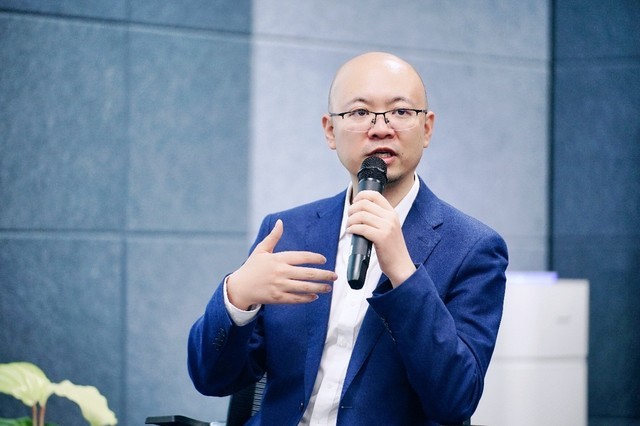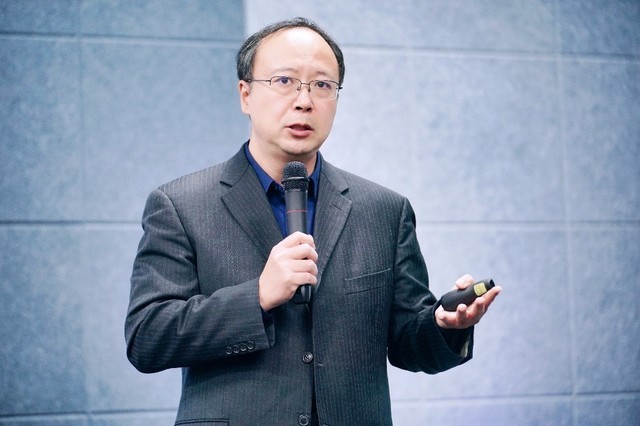
With the continuous development of the new round of technological revolution, the global economic structure is faced with remodeling, and the development of China's industry and informatization is facing the historical opportunity of a new generation of technological revolution and industrial transformation. As a new generation of information and communication technology, 5G is playing an increasingly important role in the digital transformation of the manufacturing industry. According to the prediction of IHS Markit, 5G will create economic output of 13.1 trillion dollars by 2035, of which intelligent manufacturing will contribute more than 1/3 of the total economic output.
As 5G can fully meet the application requirements of equipment interconnection and remote interaction in industrial environment, it has a wide range of applications in industrial automation control, logistics tracking, industrial AR, cloud robots and other scenarios, especially with the release of the "5G Fully Connected Factory Construction Guide" by the Ministry of Industry and Information Technology last year, which further clarifies 5G The overall requirements, construction content and construction path of factory construction indicate that the transformation of the manufacturing industry is going deeper and deeper.
Conceptually speaking, the so-called 5G factory mainly refers to taking 5G as a key technology and enabling technology, and integrating big data, artificial intelligence, cloud computing, edge computing VR/AR、 Digital Twin and other new generation information and communication technologies are organically integrated to create new models, new business formats and new scenarios, promote the extensive networking of "people, machines, materials, methods, environment and testing" in the factory according to the actual needs of production, and make full use of 5G technology to connect IT and OT, Help enterprises solve the difficulties, pain points and obstacles in the process of digital transformation, and achieve quality improvement, cost reduction, efficiency increase, green and safe development. Lenovo (Tianjin) Smart Innovation Service Industrial Park, located in Tianjin, is an excellent example.
It is reported that the Lenovo (Tianjin) Smart Innovation Service Industrial Park project fully implements the original intention of "zero carbon road, green road", and strives to build a highly information-based and intelligent industry benchmark industrial park integrating production and manufacturing, research and development experiments, and digital display. The project can not only help the factory to improve production efficiency, optimize logistics management, improve safety monitoring, reduce maintenance costs, but also achieve automated production, remote operation and monitoring, data analysis and optimization, and human-computer cooperation for the production line, which can significantly improve the efficiency, quality and flexibility of the production line.
Cloud network integration, 5G in-depth intelligent manufacturing
According to Li Bin, the 5G intelligent manufacturing business manager of Lenovo Cloud Network Integration Business Unit, although Lenovo has many intelligent manufacturing bases in China and even around the world, the Tianjin factory is positioned as a Lenovo intelligent manufacturing exhibition center with manufacturing functions, and its content is the highest level of Lenovo intelligent manufacturing, so the technology involved must be the latest. Specifically, in addition to implementing the concept of green zero carbon, Tianjin Factory is also actively practicing intelligence, enabling big data through AI technology, and improving the efficiency of the factory.

"The reason why Lenovo can achieve these two goals is that Lenovo has an intelligent manufacturing architecture, that is, our 'Optimus' engine, which enables the entire factory through its hierarchical capabilities of end, edge, cloud, web and intelligence." Li Bin explained.
Among them, 5G has played an extremely important role. First, the Tianjin factory uses Lenovo's own base stations, which are based on Lenovo's general servers and some edge devices Software Define the base station of the network, which is very different from the traditional hardware network. Secondly, the 5G network of Tianjin Factory is an independent private network, which will not intersect with the 5G network of the public, so all resources can serve production. Finally, within the factory, 5G and intelligent applications are organically combined and applied to research and development, production, supply chain, service and operation, to enable the whole factory to save energy and reduce emissions, reduce costs and increase efficiency.
In the deployment phase of the 5G base station, Lenovo adopted many hardware and software based solution architectures, and used many Intel related technologies, which reduced the development difficulty and development cycle.
In terms of software, Lenovo used Intel PWEK technology to build a 5G RAN solution, and the core network achieved high-speed forwarding through Intel DPDK. In addition, in the application of 5G manufacturing, Lenovo also realized real-time data control through Intel TCC technology, and through real-time internal verification of fault signals. In the 5G and transportation links, Lenovo also has many video algorithms built through Intel OpenVINO.
"Tianjin Plant is controlled by Beijing 5G as a whole For the operation center, this is mainly based on the consideration of safety management, but it does not mean that Tianjin Plant cannot operate independently. We also have a set of lightweight management interface in Tianjin Plant to ensure that it can operate independently locally, taking into account the management function and local safety considerations, which is also a relatively unique place we have achieved. In addition, because Lenovo has built its computing power and network infrastructure on the edge cloud and the central cloud, users can use these resources efficiently through the resource side of IT. ”Li Bin added at the end.
AI empowers and co builds the future smart factory
From the perspective of the development path of the entire manufacturing industry, it is currently in an important stage of development towards Industry 4.0. The so-called Industry 4.0 refers to the extensive application of digital technology, Internet of Things, artificial intelligence and other advanced technologies in the field of manufacturing. The goal of Industry 4.0 is to realize the intellectualization and personalization of the production process through real-time data interaction and automatic control, so as to improve resource utilization and production flexibility and enhance the commercial value of industrial production. One of the most important points is the efficient combination of artificial intelligence and 5G.
With its diversified network and intelligent edge product portfolio and end-to-end overall solutions, Intel has provided key value for promoting sustainable intelligent change in the industry. For example, because network infrastructure is critical to achieving sustainable development, Intel provides the fourth generation Intel Xeon scalability with integrated vRAN Boost processor , can provide twice the capacity without increasing power consumption, and save up to 20% additional energy consumption, thus meeting key performance, expansion and energy efficiency requirements. In addition to providing a hardware computing platform that can meet the stringent requirements of industrial environment, Intel also provides a platform for industrial edge insight (EII), industrial edge control platform (ECI) and OpenVINO Based on such software, supplemented by comprehensive industrial chain support, it will integrate emerging edge computing technology, artificial intelligence, robots, machine vision, highly reliable network interconnection and industrial software and other tools with traditional industrial automation systems, and jointly build the future smart factory with ecological partners.
Zhang Yu, chief technology officer of Intel Network and Edge Business Unit in China, said that Intel has made many customized modules for 5G in terms of hardware. For example, the fourth generation Xeon scalable processor includes forward error correction coding acceleration FFT and anti FFT acceleration modules are necessary for building 5G RAN wireless access networks. By integrating specific acceleration functions into general processors, user capacity can be improved under the same power consumption. Therefore, the overall system power consumption can be reduced by 20% to achieve the goal of green and sustainable development.

In addition, in terms of software, Intel also has many corresponding products and solutions in terms of AI and software enabling for intelligent manufacturing, including the industrial edge control platform. By combining with Intel's underlying hardware, users can directly develop applied software frameworks on this basis to achieve load integration.
At present, AI plays a more and more important role in intelligent maintenance and product defect detection, but the overall trend is still fragmented. In order to achieve different fragmented AI applications, Intel also reduces the threshold of software development for developers through deep learning deployment tool suites such as OpenVINO. Specifically, because OpenVINO Caffe, TensorFlow, PaddlePaddle and other frameworks have implemented adaptation, so the results designed by developers on different frameworks can be converted into a unified data format. In addition, due to the CPU 、 GPU and AI accelerator All of them have realized hardware adaptation, so even if reasoning operations are performed on different hardware platforms, they can be performed through unified steps.
In addition, OpenVINO is also increasing its support for large language models, including the earliest Stable Diffusion and later Chat GLM and LLAMA-2. Zhang Yu said that Intel still plays a more important role in building the underlying infrastructure. As for the innovation of the upper application, it needs to cooperate deeply with partners like Lenovo to make the technology landing in the vertical industry faster, create more "5G+" solutions, and promote the transformation and upgrading of Chinese manufacturing.
This article is an original article. If it is reproduced, please indicate the source: AI enables zero carbon intelligent manufacturing Intel and Lenovo to build a 5G future factory https://server.zol.com.cn/847/8476954.html
https://server.zol.com.cn/847/8476954.html
server.zol.com.cn
true
Zhongguancun Online
https://server.zol.com.cn/847/8476954.html
report
five thousand four hundred and forty-four
With the continuous development of the new round of technological revolution, the global economic structure is faced with remodeling, and the development of China's industry and informatization is facing the historical opportunity of a new generation of technological revolution and industrial transformation. As a new generation of information and communication technology, 5G is playing an increasingly important role in the digital transformation of the manufacturing industry. According to IHS Markit, 5G will create economic output of 13.1 trillion US dollars by 2035 ..



















